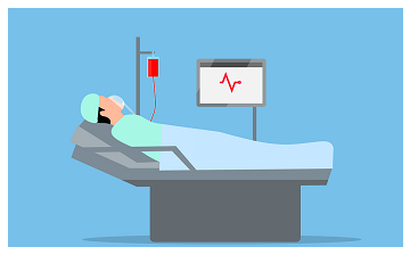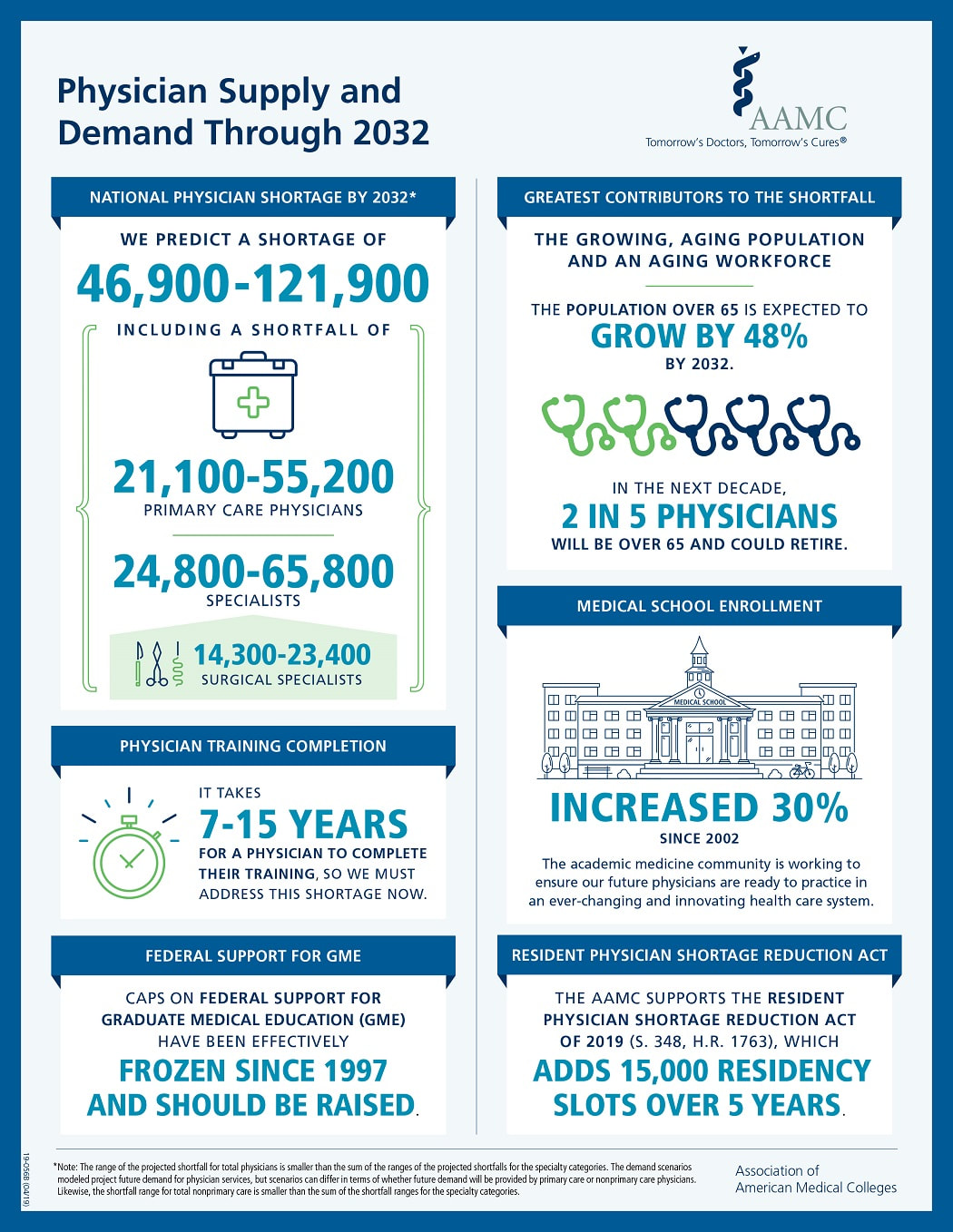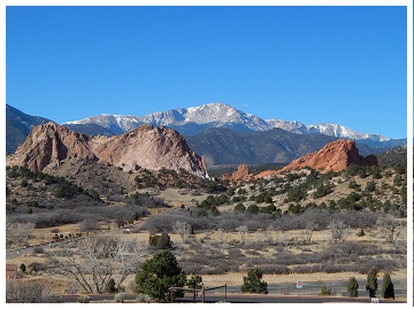News
|
Shape Divider - Style fan_opacity
|
U.S. Physician Shortage: How Bad Is It?Rural, Low-Income Areas
|
Growing Population
The U.S. population increased by 7.4% from 2010 to 2020. This is the slowest growth rate since the Great Depression, partly due to the pandemic. Yet it still represents an increase of almost 23 million people.
Aging Population
Today, there are more than 46 million U.S. residents who are age 65 and older; by 2030 that number is projected to increase by almost 18 million. By 2032, seniors will outnumber children and teens for the first time in U.S. history.
With an aging population comes an increased demand for physician care. Older adults typically have multiple chronic health problems such as diabetes, heart disease, arthritis, depression, and hypertension. An estimated 90% of U.S. adults over age 65 experience at least one chronic condition requiring specific treatments and medical care. Aging Physicians
According to Dr. Janis Orlowski, AAMC's chief healthcare officer, one out of every five U.S. doctors is older than 65. And a third of practicing physicians are over 60. But physicians often delay retirement for a few years, compared to average American workers. “We get started later because we're in school for so long,” Orowski said. “People enjoy the work they're doing and find it fulfilling. So we see physicians tend to work a little longer.”
|
What Is an HPSA? HPSAs (Health Professional Shortage Areas) are federally designated geographic areas, populations, or facilities with a shortage of health care providers, as identified by the Department of Health and Human Services (HHS). Three criteria are used to identify HPSAs:
|
Effect of COVID
In addition to the death count, the daily battle with this pandemic has taken a physical and emotional toll on physicians, leaving them exhausted and vulnerable to infection. More than a year later, some hospitals are still routinely combatting the virus.
COVID-related economic uncertainties have also taken their toll on physicians. During the height of the pandemic, thousands of medical practices called it quits. With elective medical procedures suspended, hospitals and doctors’ offices lost billions in revenue. Almost half of U.S. physicians surveyed indicated that they were seriously reconsidering their career or practice.
Federal Cap on Residencies
|
In March of this year, the Resident Physician Shortage Reduction Act of 2021 (HR 2256) was reintroduced in Congress, after a similar bill two years earlier failed to pass. This bill increases by 2,000 the number of residency positions paid by Medicare to qualifying hospitals, including those in rural areas and HSAs. HR 2256 is currently under committee review.
Is There a Fix?
Experts believe there are several steps public health officials can take to alleviate the physician shortage by equalizing the distribution of healthcare services. These include:
|
Colorado’s Current Need Within RFS's home state of Colorado, the Department of Health and Human Services (HHS) has designated 119 areas as primary care Health Professional Shortage Areas (HPSAs), meaning they lack the number of physicians needed to serve the population. A little more than half of the state’s HPSAs are located in Denver County. The rest are spread out across predominantly rural areas. Two-thirds of Colorado counties are “rural” or “frontier,” and are served by less than 10 percent of the state’s physicians. |
Images: Pixabay
AAMC
New York Times
Colorado Public Radio
MedPageToday
Adaptive Medical Partners
Contact Information
Address2150 Lelaray Street
Colorado Springs, CO 80909 P.O. Box 140 Colorado Springs, CO 80901 |
ContactPhone: (800) 266-3809 / (719) 634-3760
Email: [email protected] Business Hours: Monday – Friday, 8am – 5pm Closed Sat/Sun |
Other Information |








